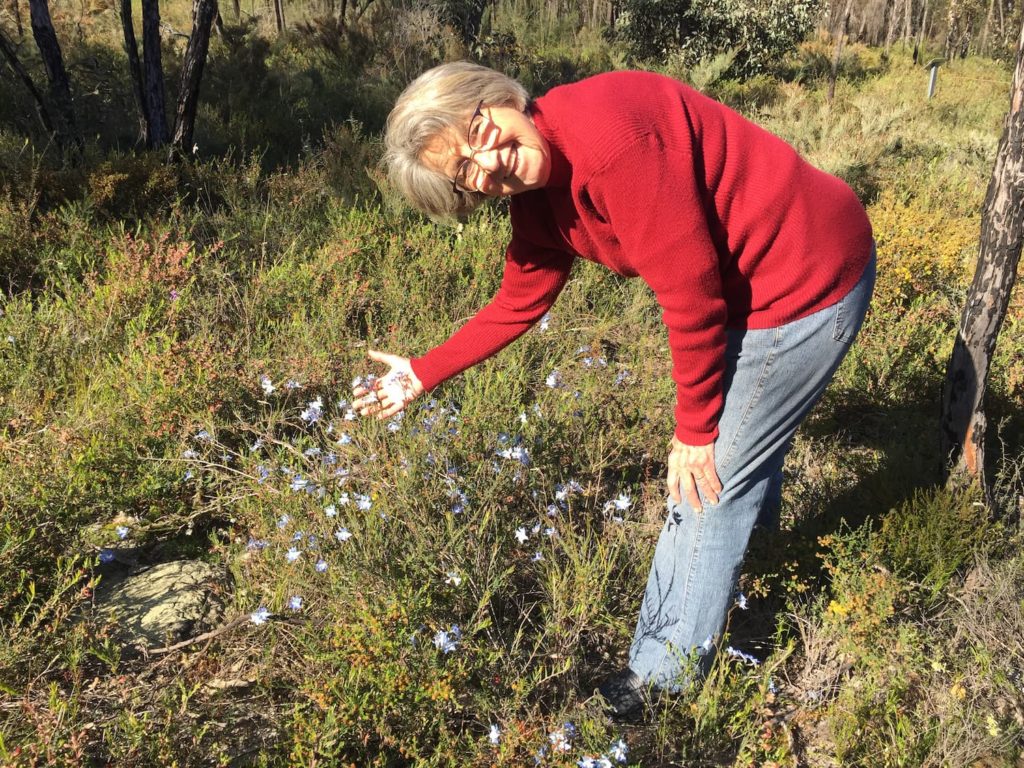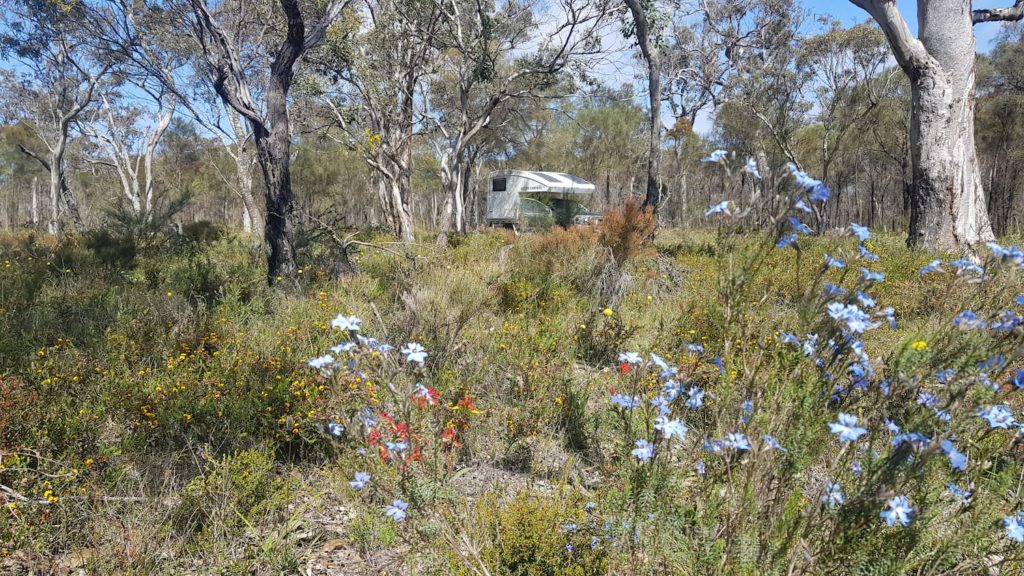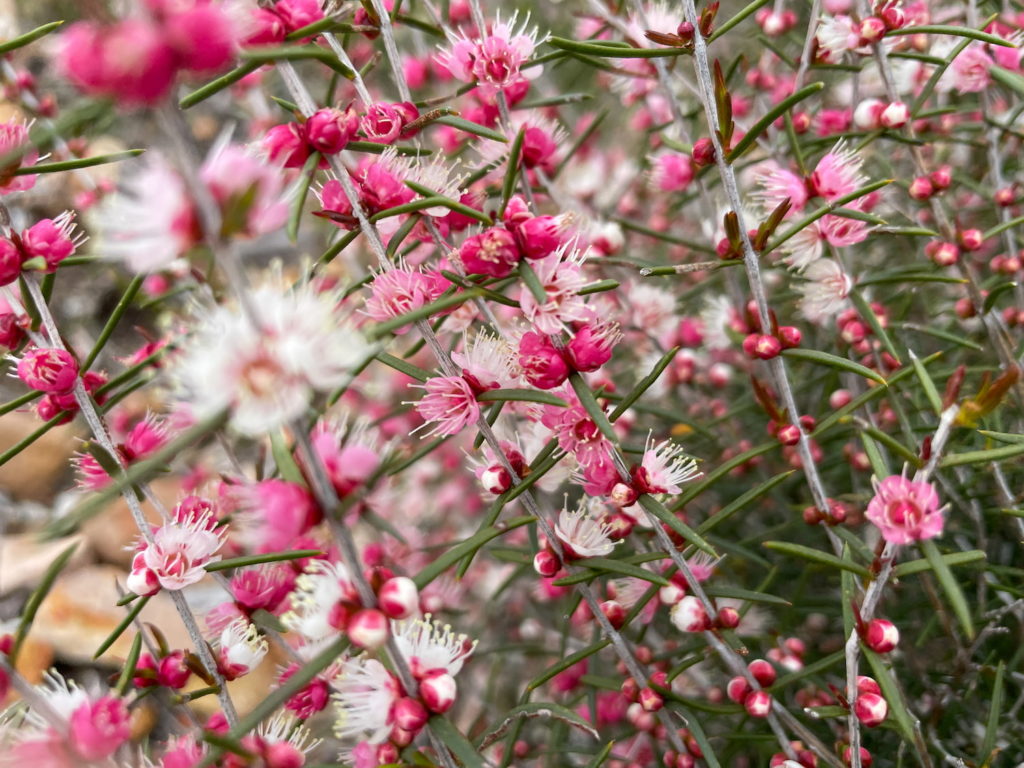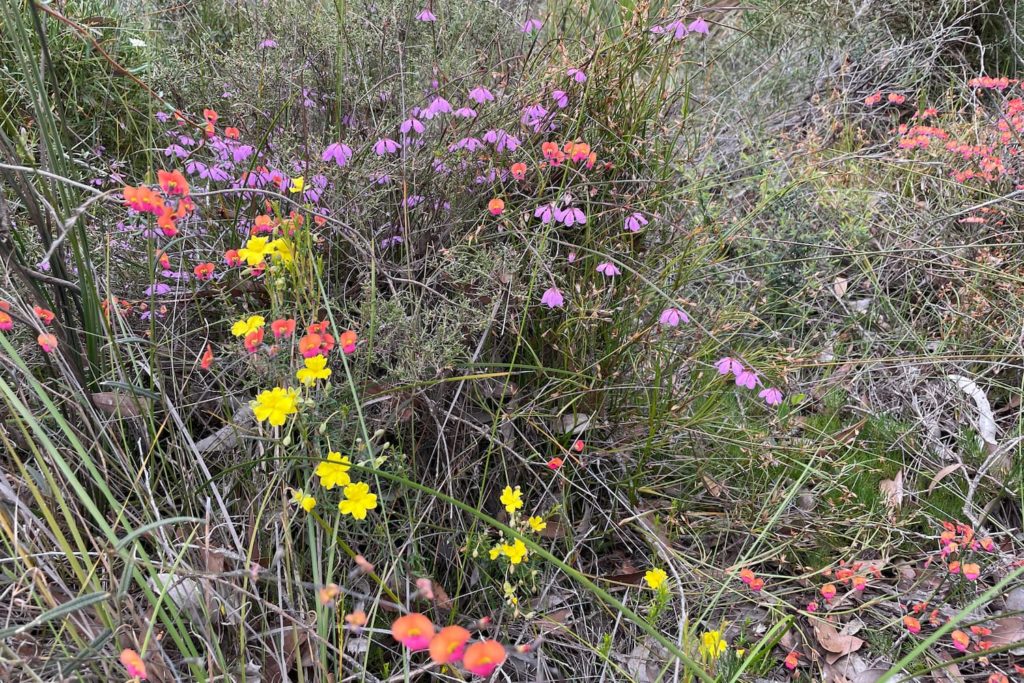Chris Lewis: Lifelong work for Kojonup Regional Herbarium
Chris and her husband John ran a mixed sheep and grain farm in the Kojonup Shire from their marriage in 1968 until 2005, when they retired to the town of Kojonup. Their farm, west of Kojonup, had some delightful bush areas, and the largest of these is now protected by a conservation covenant. Over a remarkable 45-year commitment to the plant life of Kojonup, Chris has provided much of the co-ordination work and recording of species for the Kojonup Regional Herbarium.

As children, my brother, sisters, and I lived over in Tambellup on our family’s farm. There was a whole area of bush next door to our house and that was our playground. We had special little spots where things grew – at the time I didn’t know how significant they were. And we quite often got into trouble because we were late home from school – we went bushwalking and collecting flowers instead of coming straight home.
I think I first got into planting trees with my father when I was four years old. He realised he had over-cleared some of the farm and the wind was coming in from one area. We dug up flooded gums from one corner of the farm where they grew and then planted them in a great row next to the house. And some of them are still there today. He tried to make up for over-clearing some of the farm by keeping many areas of bush in other parts. These were fenced so stock could not graze in them. He appreciated the bush, its trees, flowers, and the birds and animals it supported. I think my father’s landcare work was probably unusual at the time, although some other farmers also realised the impact their land clearing was having on the bush and land.
‘Valley’ was the name of our Kojonup farm. I had a tree nursery there for about 15 years and sent out a couple of million trees over that time. It was the 90s, an era when there were a lot of landcare grants available, and there was quite a lot of enthusiasm.When you look at some of the earlier plantings, they look quite tacky, where we’ve planted the wrong species, instead of planting local species.
I suppose it was having a patch of bush not far from the house on ‘Valley’ farm that helped me learn about plants – it was always a great spot to walk. I learnt one name, and then I learnt the next name. Then I went to plant identification workshops run by UWA adult education at various sites in the south-west. That would have been 45 years ago and I’ve been learning the local plant names ever since.
For over 30 years we had marvellous annual wildflower displays in Kojonup. If you could turn the clock back to the first year when everyone collected everything from everywhere, we really didn’t have a clue what we were doing. And everyone who had a name for something, put a name on it. You can imagine how accurate it was. But from there, the display grew and became more organised.

It was interesting when we were collecting for the display, you got to know where pockets of different types of flowers could be found in the Shire, including those that grew on sandy soil and those that liked gravelly soils. Towards the end of organising these big wildflower displays, I would be working with multiple buckets of flowers and I could tell from where in the Shire each bucket came, purely from what flowers were in there.

There are almost 800 plants that I’ve documented fully, with the data sheets and sent them up to the WA Herbarium. On our list there is probably another 20% that I know the names of, common things like wandoo, that I don’t send up to the WA Herbarium because I know what it is. I would really like to know how many plant species there are in Kojonup. There are a lot more that I haven’t documented; I haven’t touched the grasses. Certainly we’ve got over 1000 species.
The Kojonup Regional Herbarium is down at The Kodja Place. I’ve collected about 95% of the plant specimens. I take three copies and do the data sheets. And send one up to the WA Herbarium for lodgement and name verification, keep one myself for my own records, and one copy goes into The Kodja Place so it’s available for the public to use for plant identification.
We are geographically in a rather unique position. Over on the west side of the Shire here’s a lot of jarrah forest and forest plants and then as you come through to the north-east side, to the Bush Heritage reserve and some of the other bush areas out there to the east, you get your Wheatbelt plants there. And again, down south, around Mobrup (in the Kojonup Shire), are little pockets of Stirling Range plants, just in the sandy area there.

We’re between the wheatbelt and the southern forests so we have more plant diversity than most places. We don’t have the big fields of everlastings like up in the Murchison, but in a square metre we can find you a dozen to two dozen different plant species.
There are so many interesting ones. I love Tetrathecas with its small purple bells. The wattles are fascinating – there’s so many different types and each little round ball is made up of lots of little flowers. There’s a coconut ice bush (Hypocalymma angustifolium) that’s really one of my favourites because of the colours and the fact the whole bush is covered in a mass of flowers. Sundews, or Drosera, are intriguing because of their sticky leaves that catch insects, which are then absorbed by the plant. I have childhood memories of the catspaw (Anigozanthos humilis) with their vibrant colour and furry flowers. And as children we would bring home a bunch of the bright orange flowers of the Christmas tree, Nuytsia floribunda (my mother would make us leave them outside until the mass of nectar-seeking ants had run off them). Poison pea plants (Gastrolobium) fascinate me because their vivid flowers are so pretty but so lethal to livestock and they had such an impact on farm development in this area.

There are so many questions that we don’t know the answers to. The fascination is in why do they grow and what makes them grow? There are certain soil types some species like and certain soil types they don’t like.
In past years you drove from your farm into town and you’d see all these flowers on the road verge and that stimulated your interest. Whereas now you drive along and the road verges are not the same, there are just a few trees. Sadly, the weeds are invading our bush reserves and road verges. I think the biggest pest is the Guildford Grass (Romulea rosea). It’s quite hard to eradicate. It’s just a fine leaf so you don’t notice it but I think it’s squeezing the orchids out because they are both bulbs.
Where there is bush, I think it needs to be managed very carefully. Burning occasionally, not more frequently than every 10 years. But you need to follow up with the spot spray to get rid of the weeds. I think weeds are the biggest problem. The bush that’s still there needs to have buffer zones around it to help keep out the weeds.
